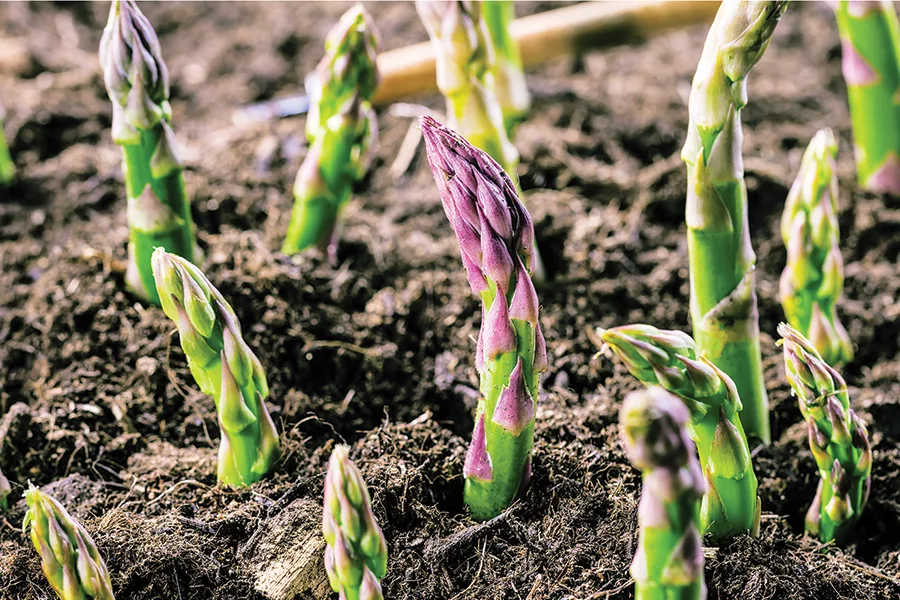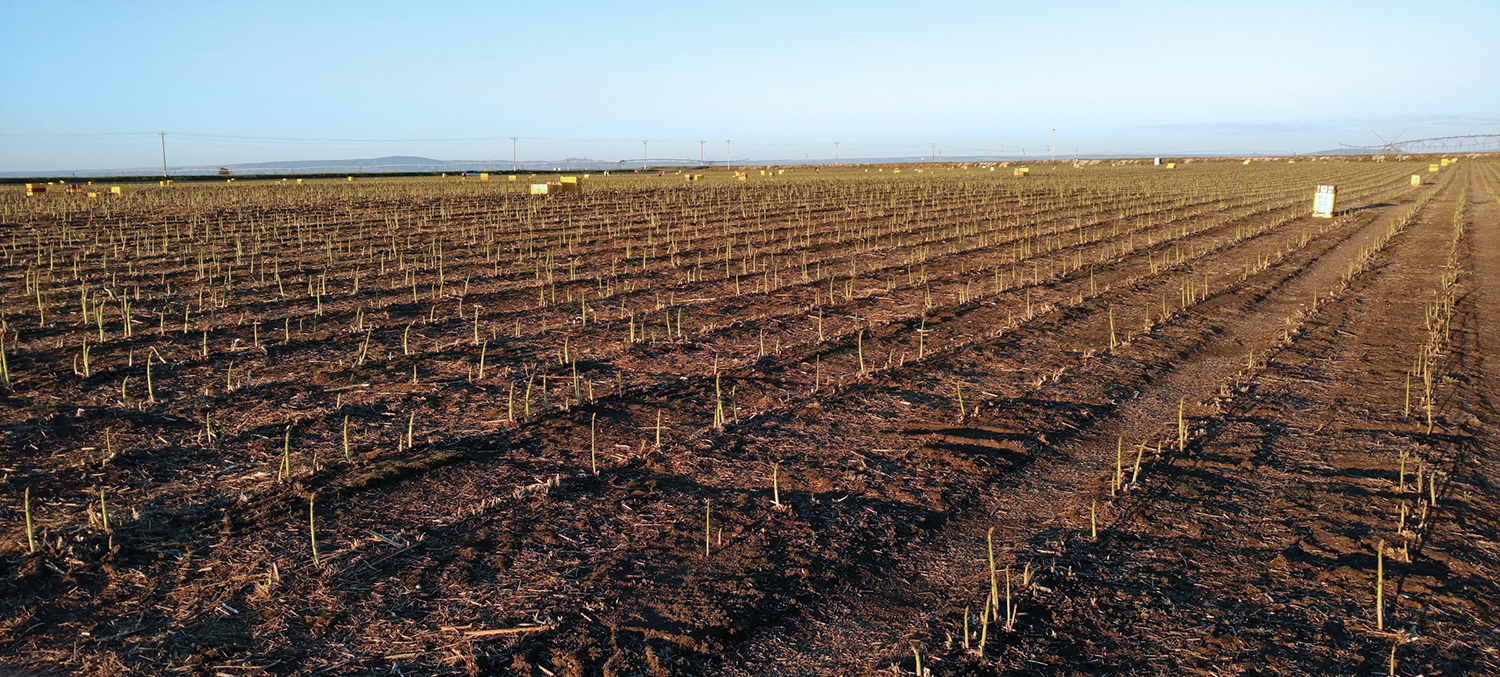
Home » Washington asparagus hangs in the balance
Washington asparagus hangs in the balance

June 14, 2023
Washington is the national leader in asparagus, the crop that kicks off the fresh produce season.
That title doesn’t come without challenges though.
The industry continues to be undermined by cheap imports from mega producers Mexico and Peru and increases to what are already the highest production costs in agriculture.
Though Mexican and Peruvian asparagus is less fresh than spears cut on Washington farms – often 15 or more days old and fumigated – the delicate crop still competes for market share on price and dominates during the off-season as equatorial fields continue to produce.
The stiff competition from the south has largely wiped out Californian producers who have faced untenable climatic shifts and harsh weather patterns along with rapidly increasing labor costs.
According to the U.S. Department of Agriculture, 500 million pounds of asparagus are consumed in the U.S. each year, with 80% to 90% imported, primarily from Mexico and Peru.
This leaves a small piece of the pie for Washington and other U.S. producers, the next biggest being Michigan, which accounts for the remaining bulk of U.S. production.
Last year, Washington produced 15 million pounds of asparagus, according to Alan Schreiber, executive director of the Washington Asparagus Commission and an asparagus farmer in Eltopia.
“We’re hoping for a bigger crop over last year’s,” Schreiber said in late April, though 2023, like 2022, saw a late start to the season due to cool temperatures, he added.
However, he said that due to the late start, consumers should be able to find Washington asparagus at local grocery stores through the end of June.
“If every household in the state of Washington bought one more bundle of Washington-grown asparagus, that would save the western asparagus industry. It would create the demand we need to stay in business,” he said.

He said the Washington industry has taken three punches in the past few years: indexing of the minimum wage, the loss of the overtime extension for seasonal agricultural labor and the inability to adjust pricing accordingly, especially under the pressure of foreign competition.
About 60% of the retail price of U.S. asparagus accounts for the cost of labor.
But with the state minimum wage going up and the continued phasing in of the overtime requirement, that percentage may tick upward.
“Asparagus has to be harvested seven days a week, so during harvest, our labor costs are high, but we get paid the same amount for asparagus whether we’re paying overtime or not,” Schreiber said.
Washington asparagus is a unique crop not only because it is harvested by hand, but because it is individually cut. Spears emerge from the soil unpredictably and can grow as much as 10 inches in a single day, meaning cutters have to walk fields in search of ripe spears.
Even before overtime kicks in, Schreiber said asparagus cutters make in the mid-$20s per hour on average and that a cutter in Washington makes more in one hour than cutters in Peru and Mexico make in a whole day.
Due to the high cost of labor, Schreiber said Washington asparagus growers can’t afford the federal H-2A visa program for sourcing temporary foreign workers, as it requires housing, transportation and other accommodations be provided by sponsoring employers.
“The cost to bring them here is a lot, and we only need them for maybe eight weeks, 65 days, and you can’t spread that cost out,” Schreiber said.
Instead, Washington’s 4,500 acres of asparagus rely on local labor that works seasonally. Schreiber said this means that the workers live in the area most of the year. He added that across the country, across all sectors, people are migrating less for ag work, opting instead for stability.
Despite having a lot of return cutters year to year, asparagus growers struggle to attract enough workers, especially in light of the low unemployment rate.
“Starting out this year, the price is pretty good and demand is high, so right now things are OK, but the cost of labor is killing us. For my two asparagus lines, I’m looking at trying to be as efficient as possible and coax the price up a little bit,” he said.
Evolving industry
In response to industry pressures, Washington growers are innovating to stay in the game.
Schreiber said the sector has made gains by planting more densely, farming more aggressively with fertilizer and developing hybridized varieties with higher yields.
“Washington yields have been increasing 15% per year since 2014,” he said.
When Schreiber first started his fields in the early 1990s, 3,500 pounds per acre was considered high yield, but that’s steadily climbed to 10,000 pounds in recent years.
In 2017, the state saw 23 million pounds harvested, and 2020 saw 19.3 million pounds, the latter valued at $52 million.
In 1990, when Washington was the world’s top producer for asparagus, 100 million pounds came out of the region.
Washington focuses on fresh asparagus, as it has an advantage. The quality and flavor of the crop is heavily dependent on the time between cutting and when it’s eaten.
According to the Washington Asparagus Commission website, “Washington state goes an extra step above USDA standards for its U.S. Number One asparagus to offer ‘Extra Fancy’ fresh asparagus, which means tighter, more uniformly-packed stalks and superior quality.”
Growers also have increased their production of organic asparagus, which now accounts for 8% of the annual crop.
Though yield has gone up, farmers must replace asparagus beds more frequently as productivity declines.
Schreiber said this ties back to the labor issue in that cutters want to work productive fields. They know they can move on if a given field doesn’t offer enough opportunity.
Though it’s expensive to replace fields, it ensures greater future success as productivity is prioritized.
For every grower, it’s a carefully calculated balancing act, and as Schreiber said, “Our industry is on the ropes.”
Agriculture + Viticulture
KEYWORDS june 2023





